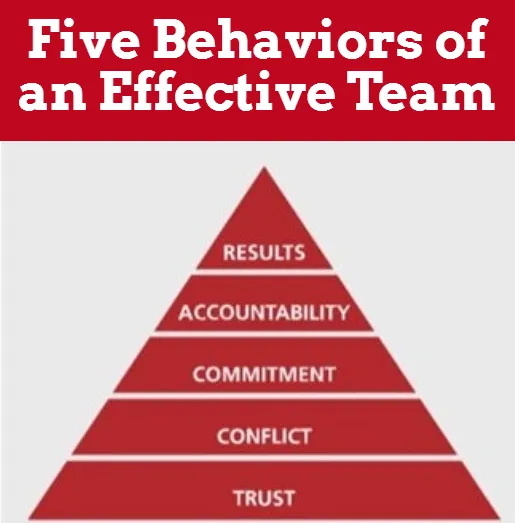Do You Know What it Takes to Build a Great Organization?
In This Issue
- Seth Godin: Perfect Might Be The Enemy of Good
- Jim Collins: Good is the Enemy of Great
- Patrick Lencioni: Organizational Health
- The Five Behaviors Team Development Process
Perfect Might be the Enemy of Good . . .
Here is Seth Godin's point of view about perfect in group dynamics and choice making.
When one person needs to fix a wall, adjust a cabinet or choose what to serve for dinner, they can optimize their choice. Make appropriate trade-offs. Take responsibility for the path chosen.
But when a group of people are asked to do the same thing, it’s easy to err on the side of the pursuit of perfect, or to choose to average things out.
And so. the legal team weighs in, and consultants are hired. And so, “but what if?” is always considered, regardless of how rare that outcome might actually be. Entire industries are built around creating deniable, average products and services that are sure to delight no one, cost more than they might and insulate the committee from backlash.
When you find yourself creeping in this direction, it might be worth asking what the risk is of simply suspending the committee and putting someone in charge instead.
Click Here to Subscribe to Seth's Blog
Good is the Enemy of Great
Jim Collins, author to the best-selling book, Good to Great (2001) takes "good" to another level. He states, "Good is the enemy of great. And that is one of the the key reasons why we have so little that becomes great."
In the concluding pages of his book, Collins poses the question, "Why greatness?" And answers it by stating that Why Greatness is almost a nonsense question. If you are engaged in work that you love and care about, for whatever reason, then the question needs no answer. The question is not why but how.
Indeed, the real question is not, "Why greatness?" but "What work makes you feel compelled to try to create greatness." HIs final comments. . . "knowing your short time here on earth has been well spent, and that it mattered."
Organizational Health
Now, let's leap forward to 2012 when Patrick Lencioni wrote his best-selling book, The Advantage in which he presents the case for organizational health. "The single greatest advantage any organization can achieve is organizational health." He then presents The Four Disciplines Model.
"Discipline 1: Build a Cohesive Leadership Team. An organization simply cannot be healthy if the people who are chartered with running are not behaviorally cohesive in five fundamental ways." The following image illustrates those behaviors.

Six Critical Questions
What leaders must do to give employees the clarity they need is agree on the answers to six simple but critical questions. The first is "Why do we exist?" Lencioni continues, "Answering this question requires a leadership team to identify its underlying reason for being, also known as its core purpose." Jim Collins and Jerry Porras introduced the idea of core purpose in their best-selling book, Built to Last (2004). They asserted that successful, enduring organizations understand the fundamental reason they were founded and why they exist.
Conclusion
What each of these authorities emphasis and agree on is the need for a culture of teamwork. Applying Patrick Lencioni's Five Behaviors Model of team development is the ideal place to begin. First, with the leadership team and from there all teams--intact or remote.
Get the Full Story
The Five Behaviors is the only team development solution that empowers individuals through self-discovery and constructive behavioral modeling to rewrite the traditional rules of teamwork.
CLICK HERE To Learn More About The Five Behaviors Team Development Process.

